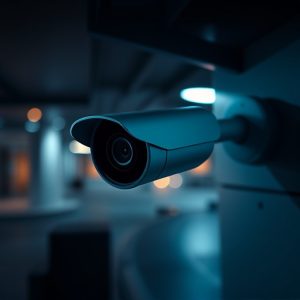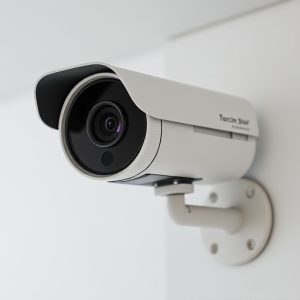Optimizing Battery Life in Hidden Camera DVRs: A Comprehensive Guide
When selecting a hidden camera with a built-in DVR for surveillance, it's crucial to consider b…….
When selecting a hidden camera with a built-in DVR for surveillance, it's crucial to consider battery life and how factors like resolution, recording frequency, and battery size impact this. High-resolution cameras or frequent recordings will drain the battery faster, so choose a device that fits your operational needs to avoid frequent recharging. Motion-activated recording is a power-saving feature, and examining manufacturer specs and user reviews can help gauge expected battery performance. Lithium-ion batteries generally offer better longevity than others, but environmental factors like temperature extremes and night vision features with infrared lighting can affect their efficiency. To ensure long-term reliability, manage motion detection settings effectively, store the device properly to prevent degradation from heat, keep firmware updated for power savings, and use only original replacement batteries. Regular maintenance and monitoring will help extend battery life and maintain the hidden camera with a built-in DVR's functionality for your covert surveillance needs.
When securing your premises, a hidden camera with a built-in DVR is an invaluable tool. Its discreet nature ensures peace of mind without compromising aesthetics. A pivotal aspect of these devices is their battery life, which significantly impacts their effectiveness and reliability. This article delves into the intricacies of battery longevity in hidden cameras with built-in DVRs, shedding light on factors that affect performance and offering practical advice to maximize your system’s operational duration. From understanding expectation settings to troubleshooting common issues, readers will gain a comprehensive understanding of how to maintain their devices for optimal functionality.
Understanding Battery Life Expectations in Hidden Cameras with Built-in DVRs
When considering a hidden camera with a built-in DVR for surveillance purposes, it’s crucial to assess the battery life expectations to ensure continuous monitoring and data recording. These devices are designed with varying capacities, influenced by the size of the battery, the resolution at which footage is recorded, and the frequency of recording. High-definition recordings and frequent activations will naturally drain batteries faster than lower-resolution settings or less frequent use. To maximize battery longevity, it’s advisable to select a hidden camera with a built-in DVR that aligns with your specific operational needs. For instance, models offering longer recording times per charge might be more suitable for monitoring areas where access is limited or in locations where recharging the device frequently would be impractical. Additionally, features such as motion-activated recording can extend battery life by reducing unnecessary power consumption when the camera is not capturing movement. When evaluating these devices, it’s important to review the manufacturer’s specifications and user testimonials to gain an accurate understanding of what to expect from the hidden camera with a built-in DVR in terms of battery performance. This due diligence will help you select a device that meets your surveillance requirements without the need for frequent battery replacements or charging.
Factors Influencing Battery Performance in Hidden Camera Systems
When evaluating the battery performance of hidden camera systems with built-in DVRs, several factors play a pivotal role in determining their longevity and operational efficiency. The type and capacity of the battery used are fundamental; lithium-ion batteries tend to offer longer life spans compared to other types, making them a preferred choice for covert surveillance devices. The resolution and frame rate settings of the camera can significantly influence battery consumption. Higher resolutions and faster frame rates will naturally drain the battery more quickly.
Another critical factor is the recording duration and frequency. Continuous recording modes will exhaust the battery faster than intermittent or motion-activated recording settings, which conserve power by only activating when movement is detected. Environmental conditions such as temperature extremes can also impact battery performance; extreme heat or cold can degrade battery capacity over time. Additionally, the use of infrared (IR) lighting for night vision further affects battery life due to the additional energy required to power these components. For those prioritizing long-term surveillance with hidden camera systems with built-in DVRs, understanding and optimizing these factors is essential for maximizing battery performance and ensuring that the device operates when needed without frequent recharging or replacement of batteries.
Maximizing Battery Longevity in Your Hidden Camera with Built-in DVR
When it comes to securing your premises, a hidden camera with a built-in DVR serves as an indispensable tool for capturing critical moments discreetly. To ensure that your covert surveillance system remains operational when you need it most, maximizing the battery longevity of your device is paramount. Optimal battery performance is a function of both the camera’s design and user habits. It’s advisable to set motion detection settings sensibly to minimize unnecessary recording, thereby preserving battery charge. Additionally, keeping the camera in a cool, dry environment can prevent battery degradation; extreme temperatures are known to hasten battery capacity loss. Regularly updating the firmware of your hidden camera with built-in DVR is also crucial as updates may improve power efficiency. Moreover, using original replacement batteries recommended by the manufacturer can ensure consistent performance and longevity. By following these practices, you can extend the life of your hidden camera’s battery and maintain a robust surveillance system without frequent recharging or premature replacements. Regular maintenance checks should be part of your routine to catch any issues early on, which could otherwise lead to unexpected power failures at critical moments.
Troubleshooting and Tips for Extending the Life of Hidden Camera Batteries
When it comes to maintaining the functionality of a hidden camera with a built-in DVR, understanding how to troubleshoot and extend its battery life is crucial for continuous surveillance. One common issue that users may encounter is unexpected power loss. To address this, ensure that the device is fully charged before installation, and disconnect it from any power source during operation to prevent draining. Additionally, regularly check the battery’s health by monitoring its performance; a degraded battery may require replacement. For optimal performance, adjust the camera settings to minimize power consumption. Opt for motion-activated recording or lower resolution settings when high-resolution footage is not necessary, as these features consume more energy. Furthermore, avoid unnecessary cycling of the device on and off, which can accelerate battery depletion.
To further enhance the lifespan of your hidden camera’s battery, keep it in a cool, dry place to prevent overheating, which is detrimental to lithium batteries. Use original manufacturer parts for replacements to ensure compatibility and longevity. Regularly updating the firmware can also improve power efficiency, as manufacturers often optimize software performance for better battery management. Lastly, when storing the camera for extended periods, leave it in a partially charged state; both overcharging and deep discharge can harm the battery. By following these tips and regularly maintaining your hidden camera with a built-in DVR, you can ensure that your device remains operational for as long as needed, providing you with peace of mind and valuable footage when it matters most.


